Website Structure: How to Plan and Analyze It
How to
A clear and logical structure is the first thing that needs to be turned over in mind before the work on the website gears up. Correct website structure positively influences search engine ranking and users’ perception of your website.
In this post, I’m going to tell you what the website structure is, why it's crucial to optimize it, and how to analyze structure using Netpeak Spider.
- 1. What Is Website Structure?
- 2. Types of Website Structures
- 3. Why Correct Website Structure Is Crucial for Optimization
- 4. How To Plan A Website Structure
- 5. Website Structure Requirements
- 6. How to Analyze Website Structure via Netpeak Spider
- 7. How to Build Website Structure
- 7.1. Useful Tips on How to Create Website Structure
- Putting It Altogether
1. What Is Website Structure?
The website structure (or website architecture) for search robots is its internal links. The more links go to a page, the higher its priority within the website, and the more times the search engine crawls it. Search engines will do their utmost to crawl any website without specific directions. If you work out a clear structure, it’ll ease search engine's understanding of your website.
So, the structure has a positive effect on how search engines crawl and index your content. Meanwhile, it also influences the audience. The website perception is being increasingly tied to ranking in SERP.
The structure can be defined by:
- Click depth – the number of clicks from the main page.
- Informational or semantic structure – it gives an understanding of what kind of pages are there on the website and how they cover semantic demand.
- URL depth – the number of slashes in the URL. Sometimes, the website structure is displayed in the address tab for ease of perception.
Read more → Ecommerce website structure
2. Types of Website Structures
There are three main types of website structures:
- Linear (sequential) structure – all website pages are connected linearly and are located one after another. This structure is typical for small websites that represent one product or brand.
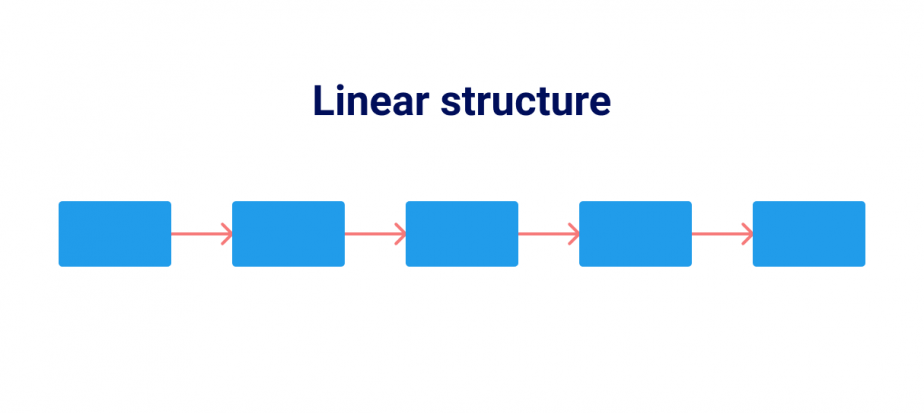
- Network (web-linked) structure – all pages are linked. You can get to any page of the website from any other. This structure is uncommon and is used mainly for websites with a small number of pages.
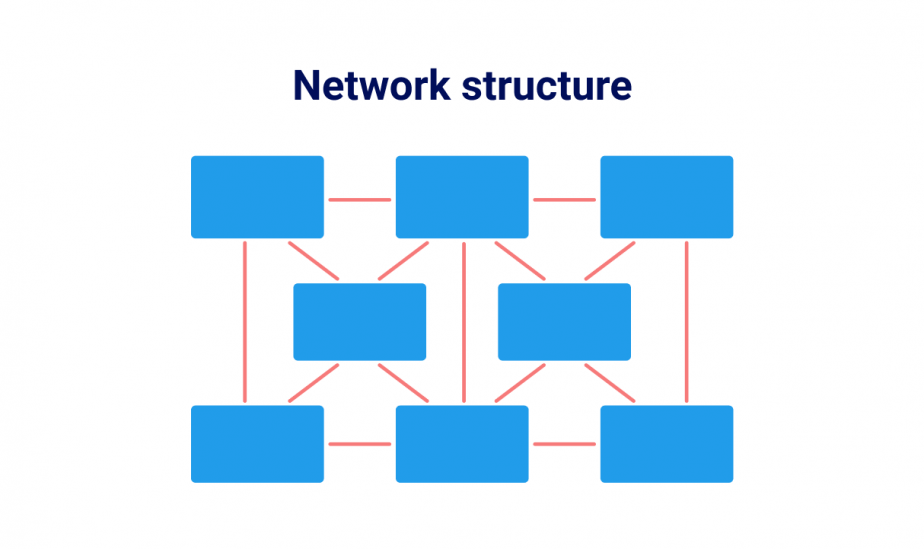
- Hierarchical (tree-like) structure – all website pages are linked to the main page and can be subordinate to other pages. Within the same hierarchy, there are higher- and lower-level pages. The main page is at the highest level. There are two possible types of page hierarchies:
- Star (hub-and-spoke) – all pages of the website are related to the main page, but are not grouped thematically with other pages.
- Multi-tiered hierarchical (tree architecture) – all pages of the website are grouped thematically, and the groups are related to the main page of the website.

Most modern websites have a multi-tiered hierarchical structure.
3. Why Correct Website Structure Is Crucial for Optimization
The building of structure is an essential stage of technical on-site optimization. The structure has a great influence on:
- Behavioral factor of SEO optimization. Convenient and clear website structure has a direct impact on users’ behavior and the bounce rate.
- Conversion rate. It’s directly related to website usability, which plays a decisive role in the purchase process.
- Transmission of the link equity. The right website structure will help to distribute the link equity by priority.
- Indexing speed. A transparent and straightforward website structure shortens the route for search robots and contributes to faster and extended website indexing.
- Sitelinks. To display additional internal links of your website in the search results, it's necessary to create a correct structure.

4. How To Plan A Website Structure
There are several steps to creating an effective website structure:
- Market and Competitor Analysis – research the structure of other websites with top positions in the search results of your market niche.
- Business and Target Audience Analysis – determine the profile of your target clients: who are they, what are they searching for, and how can you help them?
- Keyword Research – create a separate page for each group of keywords. Pages with keywords from the same supergroup should be combined into one structure.
- Website Structure Planning – determine the most suitable website structure based on the different pages defined in the previous steps.
- Website URL Structure Planning – define URL structure for all types of pages: categories, subcategories, and final website pages.
- Navigation Planning – consider navigation between website pages. How will the user navigate from one page to another?
- User Testing – have users test the usability of the website structure.
5. Website Structure Requirements
The main requirements for the website structure are:- Breadcrumbs (navigation chains) on the pages.
- URL depth doesn’t exceed four folders (that is, to get to the desired page, you should make no more than three clicks from the home page).
- All pages should contain a link to the main page of the website.
- With an increase or decrease in the number of categories and subcategories, the website structure should remain the same.
6. How to Analyze Website Structure via Netpeak Spider
With Netpeak Spider, you can determine how the structure of the analyzed website looks like and identify its weaknesses and drawbacks (or vice versa, spot some novel ideas if you plan to use competitors' tactics).
To get access to Netpeak Spider, you just need to sign up, download, and launch the program 😉
Sign Up and Download Netpeak Spider
P.S. Right after signup, you'll also have the opportunity to try all paid functionality and then compare all our plans and pick the most suitable for you.
To analyze the website structure, follow these steps:
- Launch Netpeak Spider.
- If you’re interested only in the analysis of the website structure and not its complete audit, select the ‘Minimum’ template in the ‘Settings’ tab.
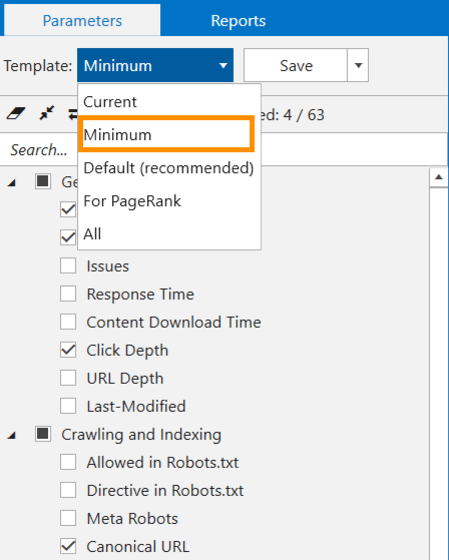
- Enter the URL of the main page in the URL bar and start crawling hitting the ‘Start’ button.

- When the crawling is completed, go to the ‘Reports’ tab → ‘Site Structure’, where the URL structure will be displayed.
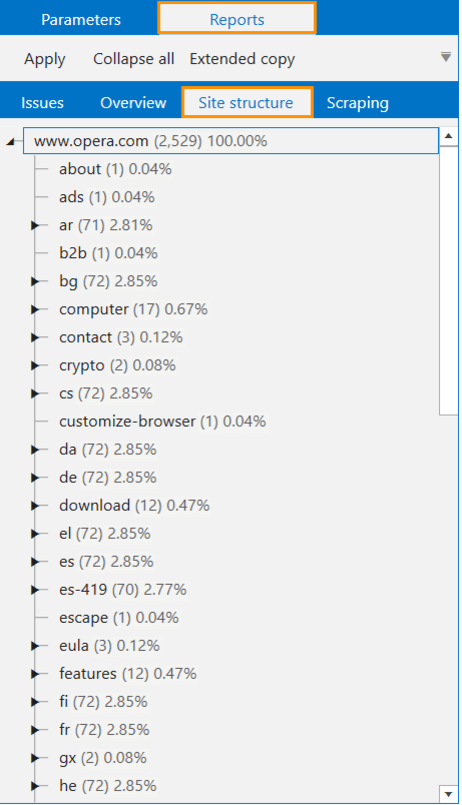
- To transfer the website structure data to a tab, use the ‘Extended Copy’ feature. The entire structure will be copied to the clipboard. You will be notified about successful copying in the bottom right corner of the screen.
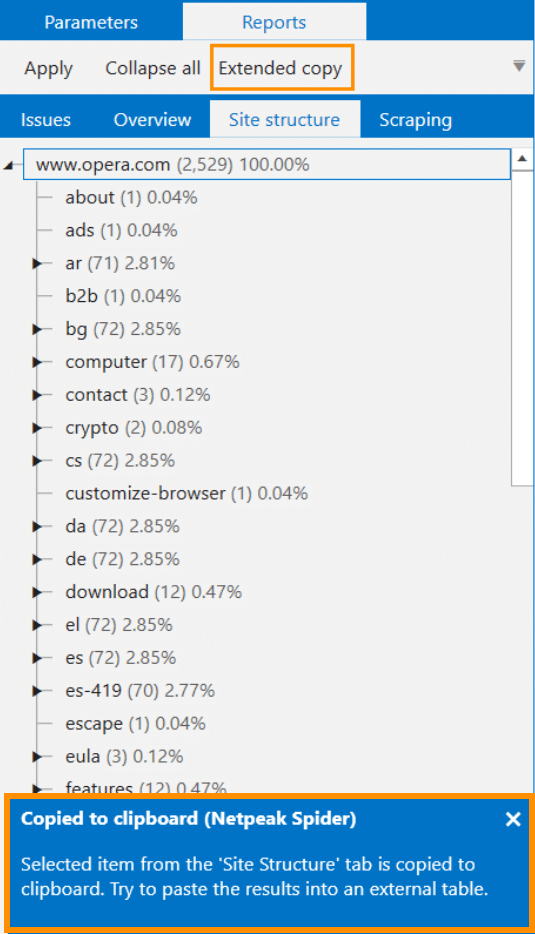
- Paste the data into any spreadsheet editor (Microsoft Excel or Google Spreadsheets, for example).
The ‘Site Structure’ report in the Netpeak Spider allows you to comprehensively analyze your website or competitor’s website in terms of structure in the URL segments.
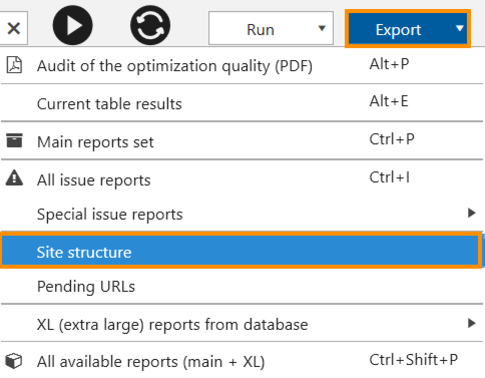
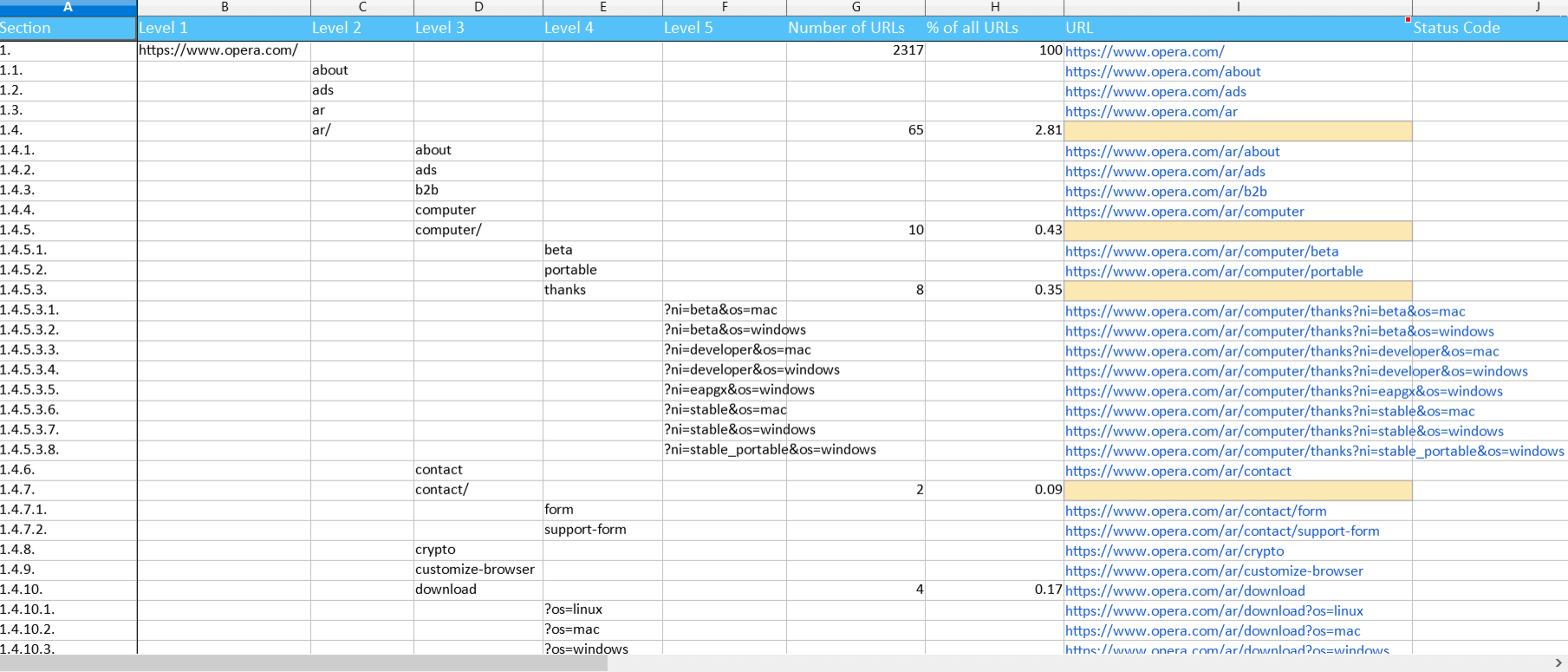
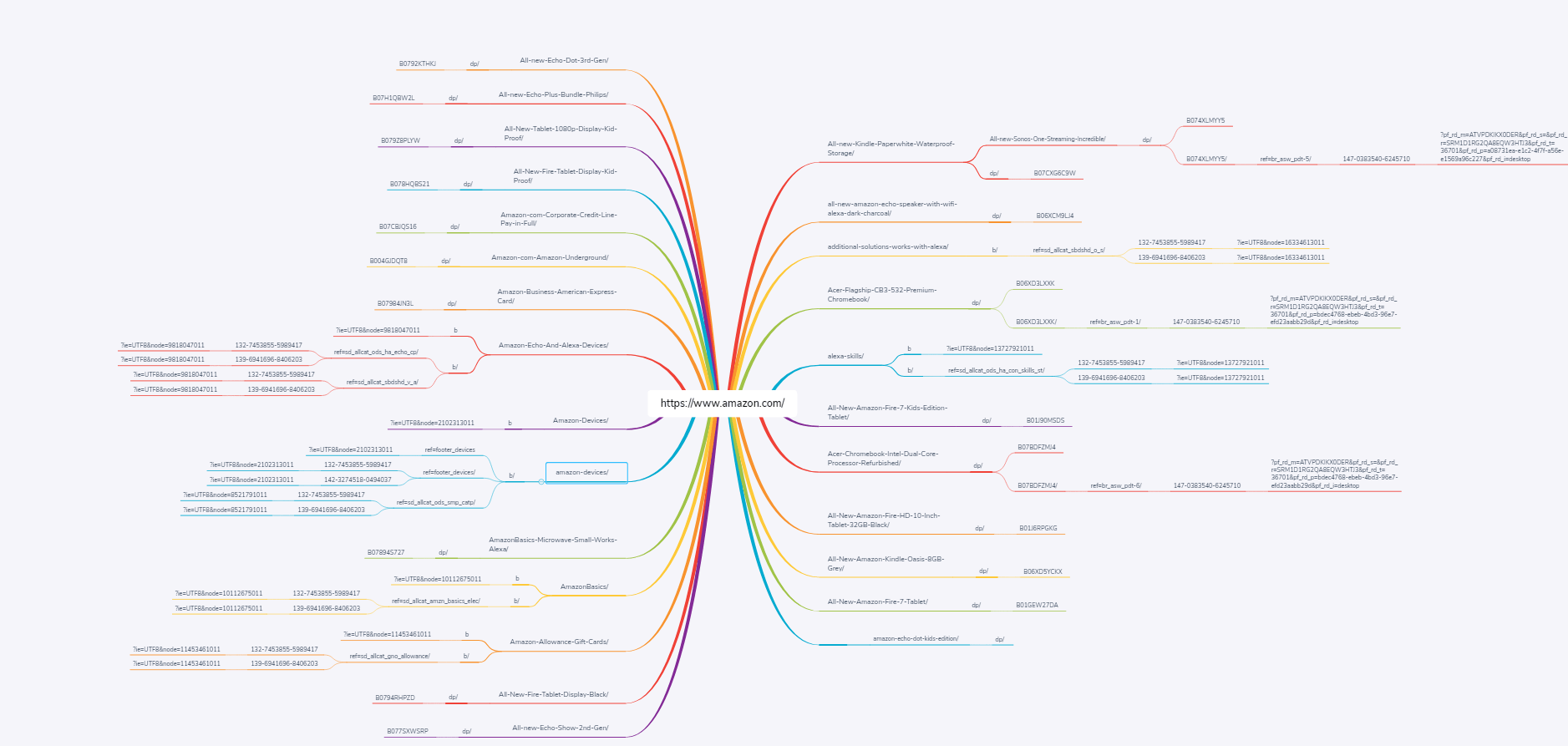
7. How to Build Website Structure
Before building the website structure, you need to do keyword research that will help you know more about the needs of your target audience.
Let’s assume that we have to collect keywords for a bathrobe online store. To do so, I’m going to use Serpstat.
- Enter your query into the search bar, select a search engine, and go to the tab ‘SEO Research’ → ‘Keyword Selection’.
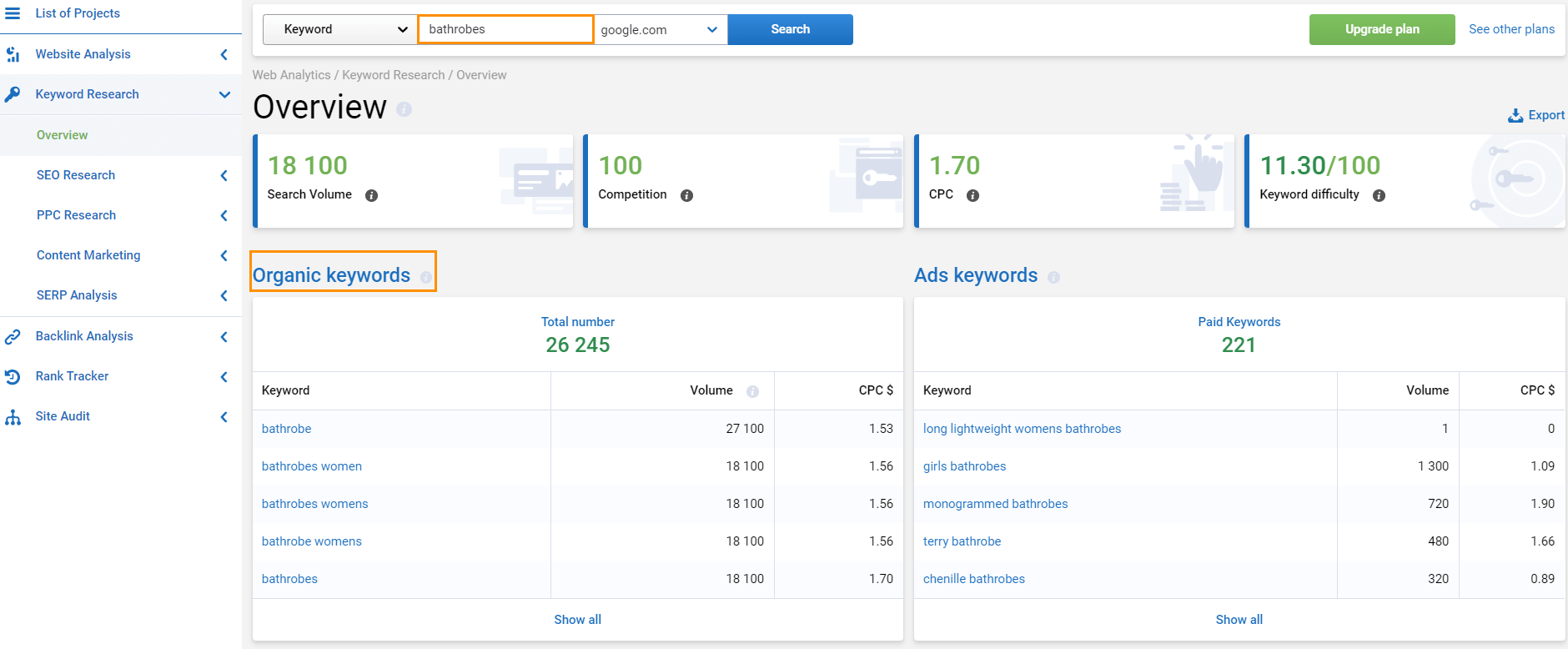
Not all the results will be suitable for creating the website structure, so it’s better to set a filter, excluding queries that don’t relate to purchases and types of bathrobes.
Group the filtered phrases using the ‘Clustering’ tool in Serpstat. Based on the keywords for ‘bathrobes’, I found out that users are interested in such categories as material, fabric type, size, style, brand, and also discounts.
You can visualize the website structure based on the collected keywords in the XMind tool.
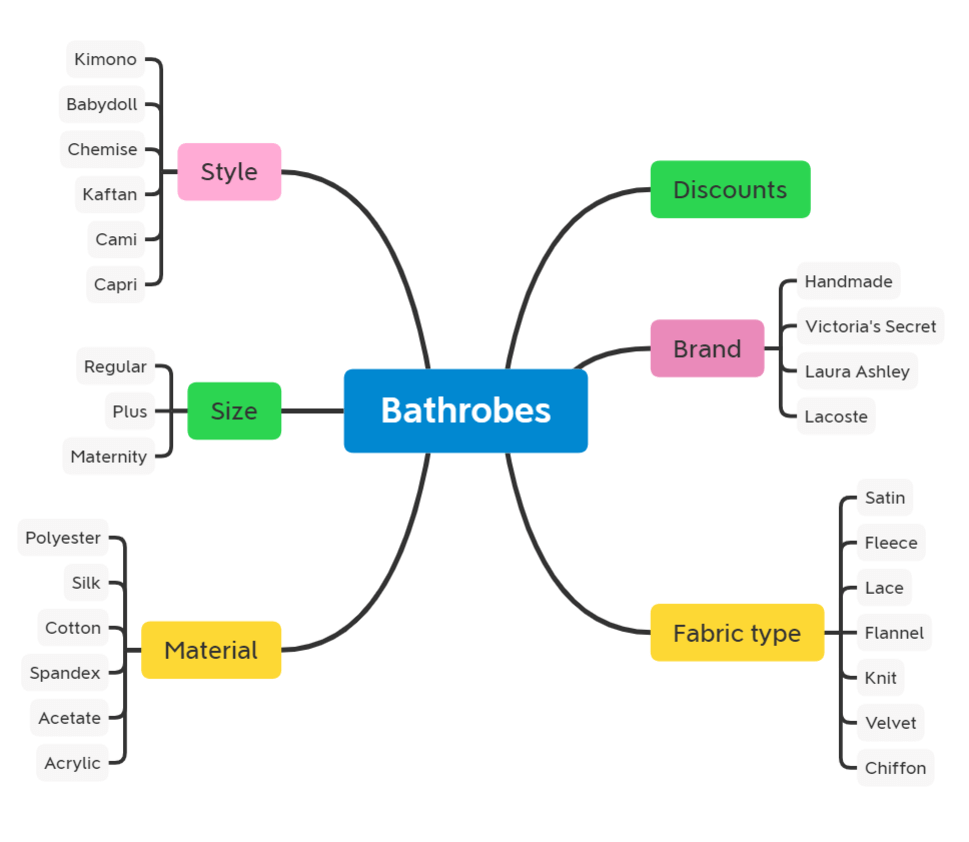
Besides, you can create a structure by analyzing the websites of your competitors. Identify page types and the pages that produce the largest amount of traffic on the competitor’s site. If competitors have the structure displayed in the URL, you can crawl their website with Netpeak Spider and open the URL structure in Xmind. You can also use Serpstat to export only visible competitor’s pages, paste into Netpeak Spider, crawl, build a structure and open it in Xmind.
7.1. Useful Tips on How to Create Website Structure
- Use hubpages – they’re important overview pages with a common topic or category that combine subcategories and detailed topics into one.
- Create a SILO content structure – hierarchical organization of your content by topics. The hubpage will merge content into a shared branch, and the SILO structure is responsible for the distribution within this branch.
- Add links to the key sections in the menu or footer of the website.

- Add different types of linking – contextual linking, use various scripts.

- Create an HTML sitemap that will contain links to important sections or all pages of the resource.
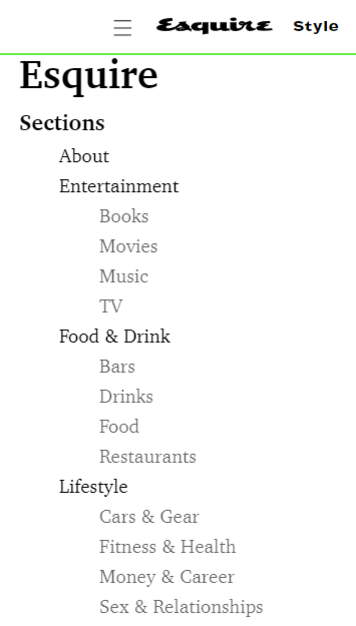
- Use user-friendly link texts that briefly describe the essence of the page you bring visitors to. Google uses the anchor to determine the relevance of your content to the user’s intent.
Putting It Altogether
- The structure of the website is the correlation between all its pages and the clear hierarchy.
- Correctly optimized website structure influences the perception of the website by search engines, the behavioral factor, indexing speed, and the transfer of the link equity.
- When crawling via Netpeak Spider, you can analyze the structure of your website, your competitors, getting a convenient report.
Tell us about your experience gained in website structure optimization in the comment section below.



